|
Happiness, Prosperity & Progress
Post-Museum - More than [show] business: Post-popup Centre for Contemporary Arts Singapore, Gillman Barracks 6 August - 17 August 2014 Relevant signposting information, check pages 39 - 44. http://www.lta.gov.sg/content/dam/ltaweb/corp/Industry/files/COPTrafficControl-Revised%202010%20July.pdf Some time in December last year, I made a submission to the Singapore Biennale 2013 team to include my 'Progress' signs as part of the event. Some days back, I found out that the Land Transport Authority had beat me to it! I used to wonder about the feasibility of my proposed placement. To my delight, LTA has provided a real life demonstration. Cheers!
http://www.nhpr.org/post/socrates-exchange-what-progress
Our philosophy series, the Socrates Exchange returns with the question “What is progress”. Centuries of development have allowed us to live longer and advance in ways we never could have imagined, but with over population, depleted resources, and nuclear weapons, some say we’ve progressed too far. Does progress have an ending point? Is too much progress a bad thing? Can one person’s progress harm the progress of another? Can progress in science, technology and human rights harm progress in religion and morality More lately, I have been looking at what we determine as signs of progress. This started off as a visual interest in traffic warning signs around construction sites in Singapore, together with artifacts that make up these sites. For me, these signs contribute to an atmosphere of anxiety. And effectively so, I suppose. The colour and repetition of the orange signs, in particular, work to warn and alert. Together with the text inscribed on it - CAUTION, WORKS ACCESS, WORKS AHEAD etc., they convey a necessary message to the surrounding public. Although directly referencing possible dangers around a site, it is infact forewarning a development. In other words, the signs forewarn what might be acknowledged as a positive advancement in terms of new infrastructure. I began thinking about the situations that these signs indirectly reference. So far, this is the following list that I have come up with (and hope to add to):
Upgrading Property Redevelopment Building Mall Condominium Train Station Expansion New Road Infrastructure Concrete Acquired Sold More Bigger Taller Upcoming Renovation In a city like Singapore where a stable and progressing economy is signaled by growth in a built environment, I am particularly taken by how these words singularly tend towards a positive addition to a space. More importantly, what interests me is how this ‘positive’ growth can often contrast with the ill effects it has on the quality of life surrounding the site while in the process of its emergence. I no doubt believe that in terms of urban planning, some of these developments are wonderful and should be welcomed with foresight. I also understand that in comparison to a lot of other cities, Singapore enjoys a relatively fast and effective commencement and completion of construction projects, and this is great for any country. For example, I learnt from Neil Humphreys’ latest book Return to a Sexy Island: Notes from a New Singapore some important statistic that I thought to quote. Apparently, Sentosa Island (located south of Singapore’s mainland) had just taken 34 months to develop Resorts World, a huge tourist draw for the little island. He writes, … Resorts World Sentosa had to knocked up several themed hotels, including Crockfords Tower, Hard Rock Hotel Singapore, the Festive Hotel and Hotel Michael; dig a couple of lakes; add some state-of-the-art productions and animatronics shows and build a galleria with more than 20 high-end boutiques and fashion labels. Oh and throw up Universal Studios Singapore, too, if they could possibly spare the time. Resorts World broke ground on its Sentosa site on 16 April 2007. Resorts World Sentosa celebrated its soft opening on 20 January 2010, just 34 months later. Whatever one’s thoughts are on gaming, such productivity throughout a global economic downtown is bewildering.[1] I actually really liked the old Sentosa. I don’t ‘dislike’ the new Sentosa. I try to be balanced with my views and so I can see how Resorts World has been a major transformation in reviving the island with a wealthier crowd and having well-equipped venues to hold big name exhibitions and events. What I miss though is being able to wander around the island on foot without feeling underdressed, feeling a fluidity of movement as I navigate around weathered sites of attraction, knowing that I’m away from the endless tall and large buildings of the mainland and can finally seek the thrill of actually being on an island. I wonder that with our emphasis on infrastructural growth, perhaps we have neglected to see how equal importance should be placed on identifying and maintaining sites of heritage and nature. My question then, is something that I have been asking and which I think is something we all have to at some point ask ourselves regarding development: What is progress? As a follow-on from my observatory abstract paint works involving select portions of current construction sites, I am keen to look at the creation of functional street signs that explore and question what we as a society determine as signs of progress. [1] Neil Humphreys, Return to a Sexy Island: Notes from a New Singapore, (Singapore: Marshall Cavendish Editions, 2012), p.114. I am finding that I am once again returning to the philosophies behind the different historical avant-garde movements. In particular, the aesthetics and thinking behind Constructivism seem especially appropriate for my interest. I tend to do a fair amount of thinking before starting out on a series. Not that any of it necessarily translates into the final aesthetic of the work, but the thinking does lay out a substantial amount of foundational thoughts that could mirror or perhaps oppose the eventual outcome of my investigation. After a long hiatus from painting, priming and sanding my ply surfaces already puts me in a highly anticipatory state. At times, perfecting my surface preparation procedure honestly does gives me goosebumps, in that it feels as if the work has already been birthed. This gives me a much needed momentum. A fine blank slate for new engagements. I seldom really know what I am doing, until I begin 'trying'. And then I realise how many times I have to work and rework a shape, image, or colour, before I can be mildly satisfied. The more I 'try', the more my intentions become apparent to myself. It is often in this process of reworking these elements obsessively, that revelations as to the 'why' of the project are further clarified. Prior to making the work, I take myself out on a lot of field trips to spy on sites. I have been snapping construction shots from both street level as well as from the topmost level of public flats, giving me access to wonderful views of the transient infrastructure within these spaces. I have also been taking lots of measurements of safety and warning signs surrounding these spaces and strategically stationing myself at site entrances, to the bewilderment of these construction workers. Generally, I start by immersing myself in environments of interest, or around images of the like, before I begin thinking about how I feel towards the subject. In this case, the subject being the building process, the aesthetics that define it, its social reality and the way we choose to engage, or dis-engage with it. Judgments aside, what can be acknowledged is its transitory state, undeniably in process to a permanent form. This permanent form, being something of the future.
It feels strange then if I were to think through my actions thoroughly, to pour so much effort into documenting something that was temporary. I asked myself why I thought this period to be important. The only answer I could muster, was the blatant obvious. This was the Now. So much has been said about remembering the past or looking ahead to our future. Very important issues indeed. But what I find myself being concerned with, is how we mark the present. In thinking about this, I began pondering what the archaeological remains of the present might be, which is an oxymoron if one considers the hermeneutics of such terms, but therein lies the approach that is not dissimilar to how we often see the present through our past histories and future hopes. In considering the archaeological present, we too begin to look towards the future, and then back on the past. So along with the direction of this thinking, this 'past' is that which will then constitute our current times. With these lenses, I hope to reduce the visual language that subsumes these transient sites to colour, texture, and form, so as to construct a way of recording and associating with this spatial activity. I have begun by imprinting and documenting patterns and shapes that strike me as having distinct narratives, in terms of it being an abstract of an object which has a necessary function and thus, a longstanding presence within these spaces. In my two most recent works above, I worked with reflective surfaces and the inherent geometry of crane structures. These elements are isolated and re-presented to form part of a collection of found aesthetics. If looked upon by one of a different space and time, the collection may be studied (if one so wished) to properly identify a very particular assortment of construction spaces. Studying warning signs, I became fascinated with the potential use of text and context. The CAUTION sign above is the only one I made using synthetic canvas material, but have yet to consider its proper placement. I have looked at the possibility of approaching vacant land due for development and bringing to attention planned building activity. I am not sure though, of the legalities surrounding such action. Might it be trespassing?
The picture above was taken at a vacant field behind my home in Pasir Ris, located at the eastern end of Singapore. There is no planned development in this context. I was merely testing how the 1.8m x 1.8m sign would look in a space like this. From afar, it actually looks rather small. In recent times, I have noticed that there has been a proliferation of artists concerned with urbanization and built environments. When I was an undergraduate at art school, I often questioned my own explorations as I looked around me and began making work about the world. Caught in a place of non-permanence as an international student in Australia, and realizing that construction sites spanned the entirety of my lived environment, attention was naturally drawn to the transitional aspects of my existence, and that of the place in which I resided in. Returning home to Singapore after my five years of trying to build myself up as an artist in Sydney, I found that everyone had already lay claim to this interest in the negotiation of urbanized spaces. It seemed that everyone had something to say about this state of being.
Little wonder how this came about. My choice of subject matter had been a natural one proceeding from my observations of what it meant for me to exist in these uncertain times. I felt perpetually uprooted from scenes of familiarity as spaces changed far quicker than I can bring myself to know them. In Singapore, where property developments are hailed as a wonderful sign of economic growth, locals had begun begrudging our gradual lost of heritage and history. Local artists were already responding to this sentiment in many ways. But often, so much of it sits passively as a silent visual in a gallery space or perhaps get successfully programmed as a theatrical play, spurring the nods of so many, but ultimately basks in its own ironic ephemerality. While attempting to get back on track with creating work, I knew that if I were to continue down this path of exploring how is it we experience spaces, I had to point myself toward a clearer goal. I started asking myself the question: Of what forms might a work take to effectively comment and generate questions regarding the state of this land on which we reside? For myself starting out as a painter, I had begun by identifying infrastructural aesthetics in urban spaces as the only constant, no matter how quickly they switched as cards in a poker game. In the end, they were still cards we played. Either way, we are still players in the game. My early works were important for me as they provided me with avenues to remember places. Putting ‘me’ aside, it was not always interesting for the viewer as my engagement as artist with the work was paramount, to say the least, to the process, and it required more than average interest on the viewer’s part, to connect substantially with the work. My later performance works were often slow, and some say tedious, or even boring, and I completely agree. I felt then that it had to be, because anything too quickly conveyed seemed like a mere display of words or aesthetics. I wanted viewers to be aware of the time they were given to ask themselves, “What is happening, why am I here, what am I supposed to do?” The problem with the character of these works is that they were not always immediately engaging, and unfortunately for me, that can sometimes be more than half the battle lost, in terms of having any real effect on an audience. I know that I have to find that mid-point of sustaining interest but also in those few moments, open up a world of perspectives. I want my audience to be thinking audience, not just viewers, or people at the gallery for a fun day out. I thought it might be wise while beginning this research, to undertake some sort of study surrounding these cultural patterns. Perhaps, it might do me good to put together some research situated around Singaporean artists on urbanization. Since it was an area in itself, taking my observations to a wider lens might enable me to make more insightful remarks about how environments affect us, and perhaps use that information to create a new body of work. I am looking forward to the start of the residency with Chan Hampe Galleries (Singapore) and MetroArts (Brisbane) at the later part of 2012, and meeting with my Australian collaborators. I hope that by then, I might have a clearer idea of what forms this new work should best take on. |
AboutThoughts about things. Archives
July 2019
Categories |

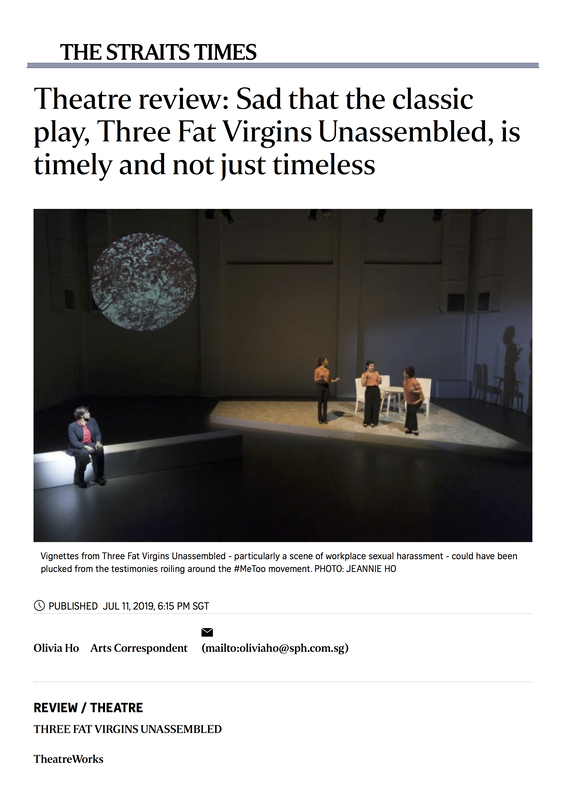
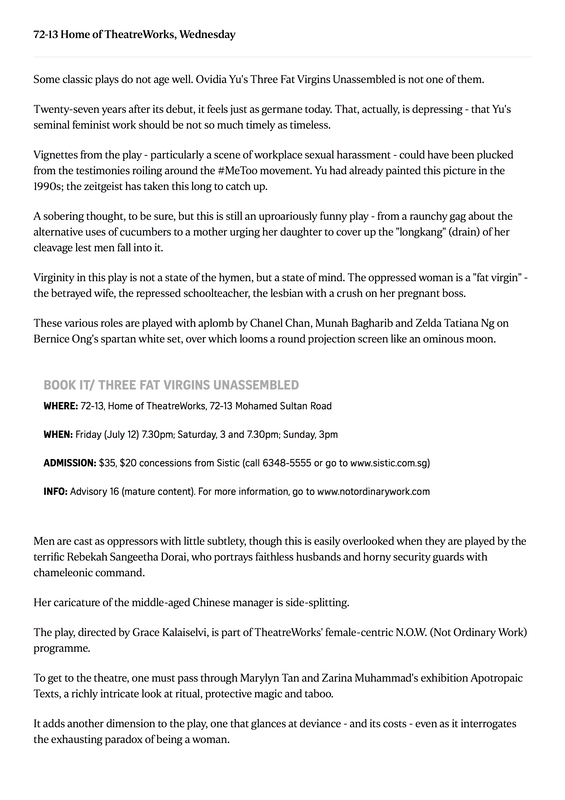
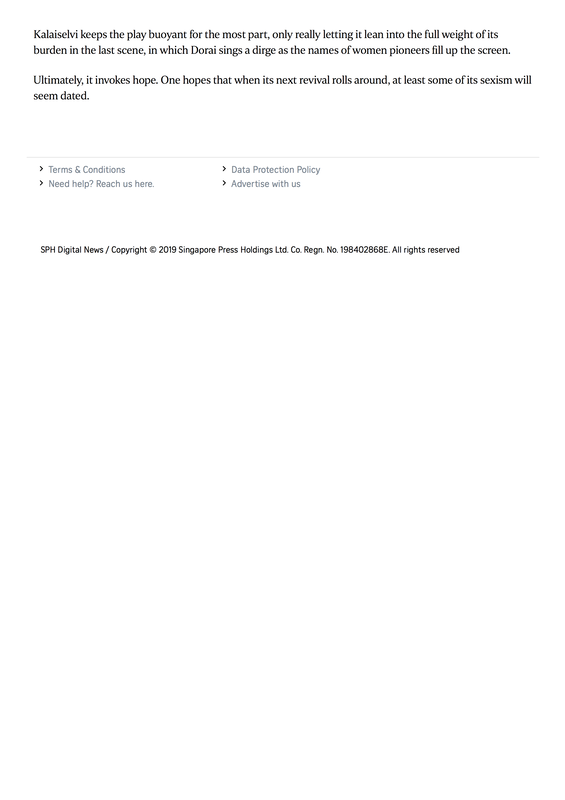
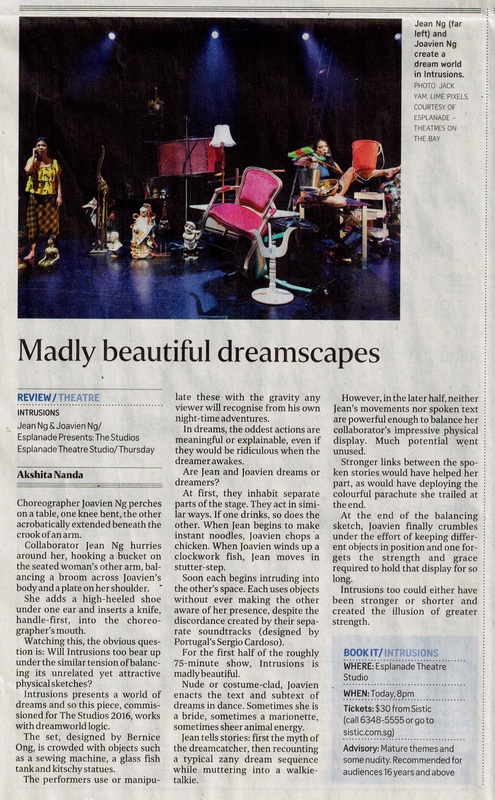
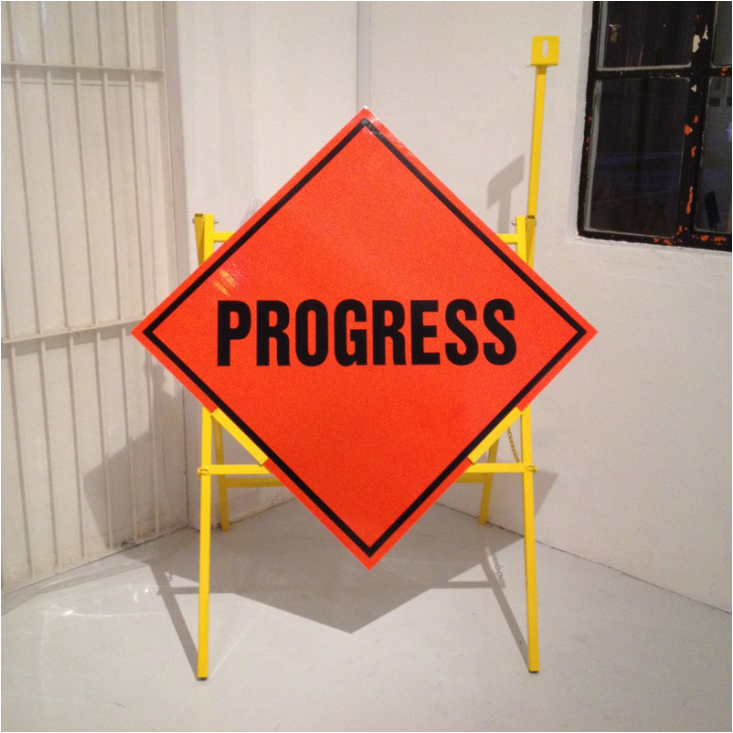
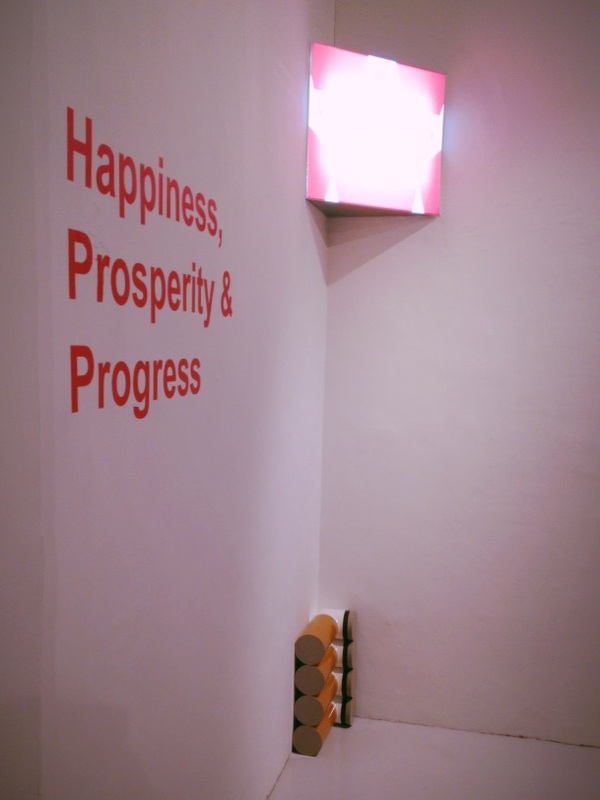
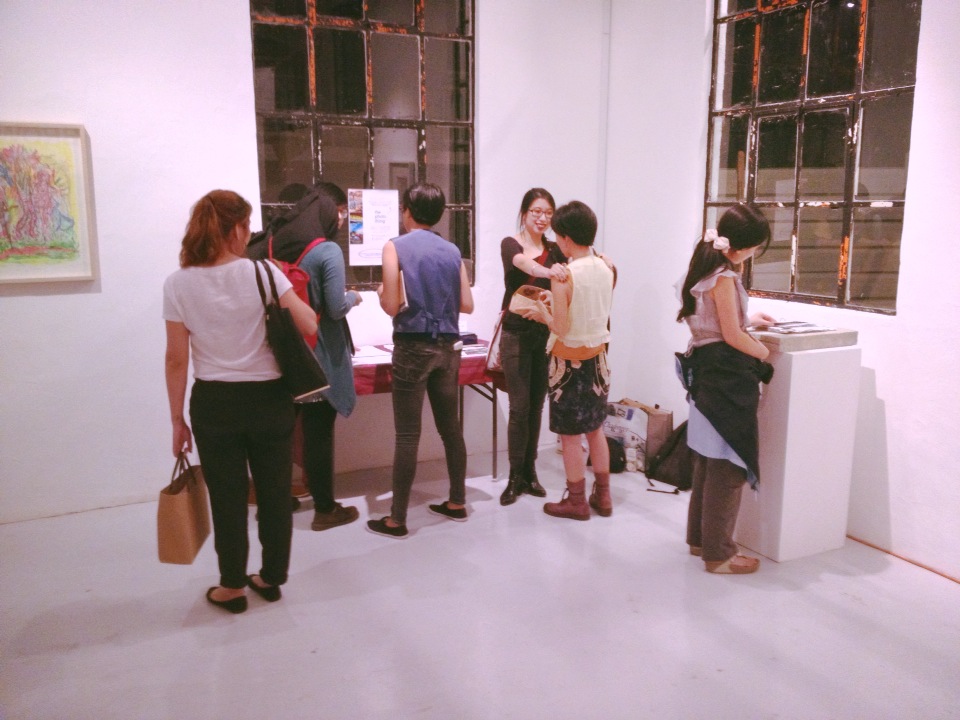
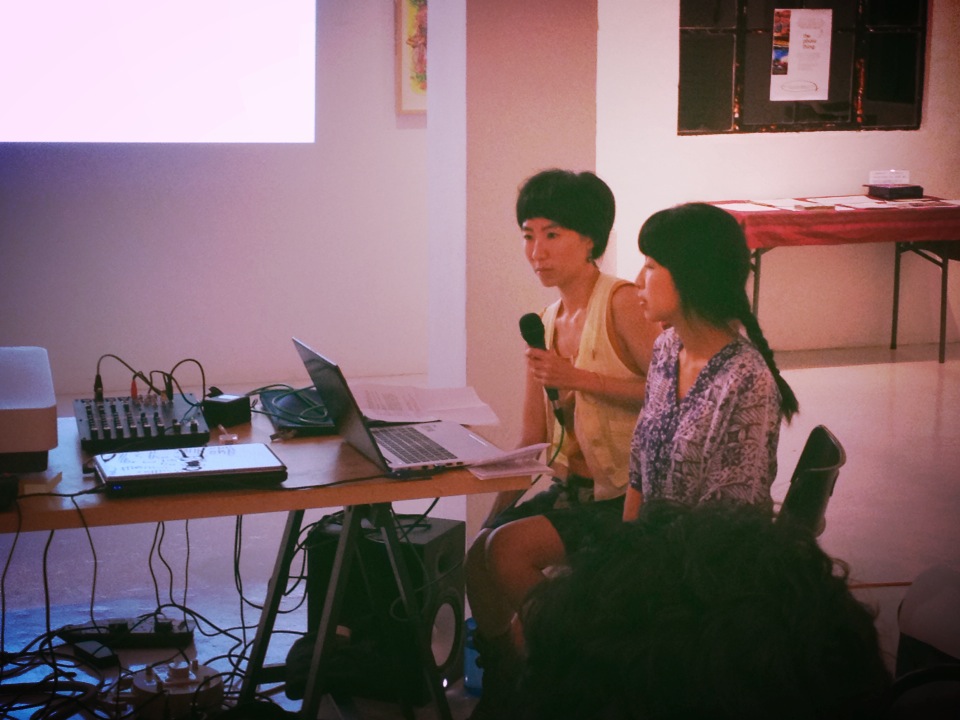
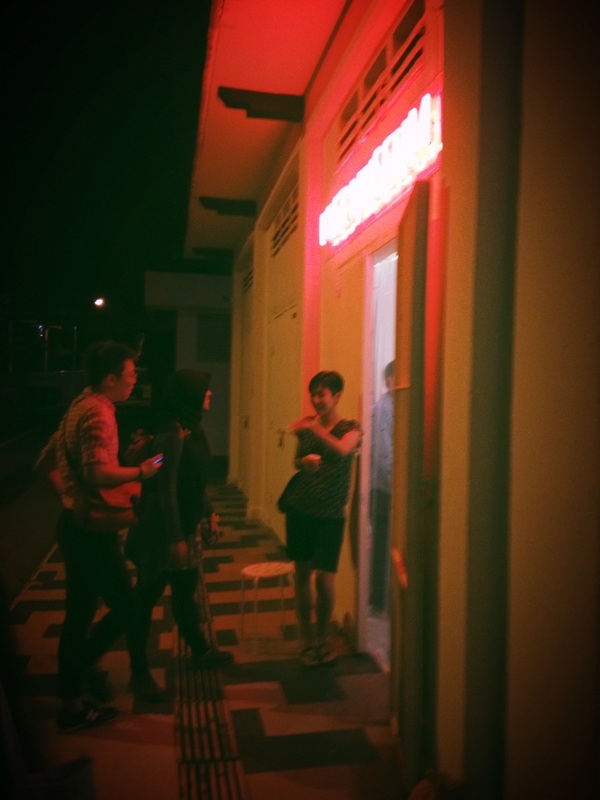
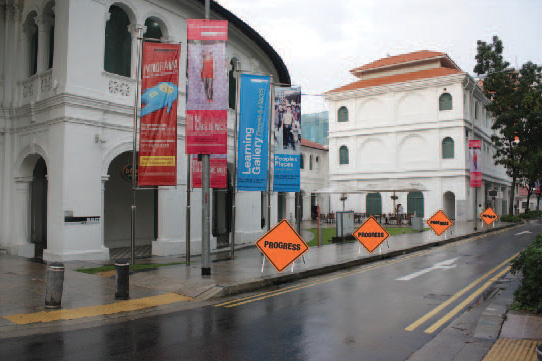
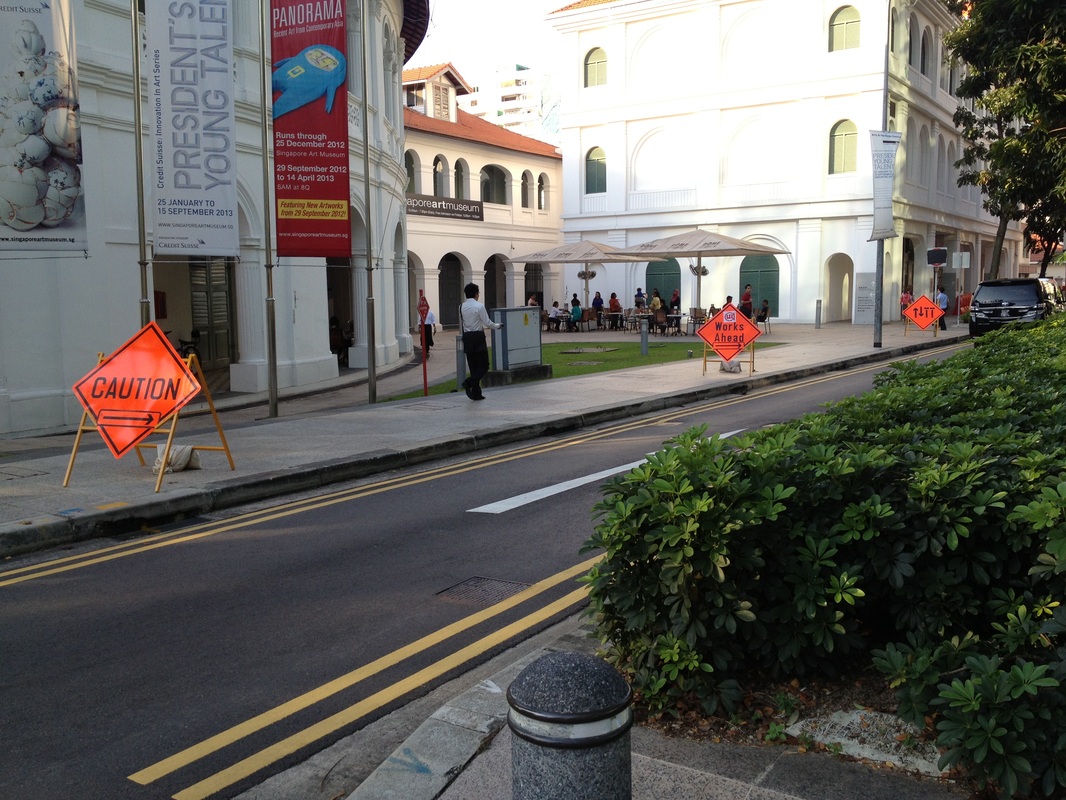
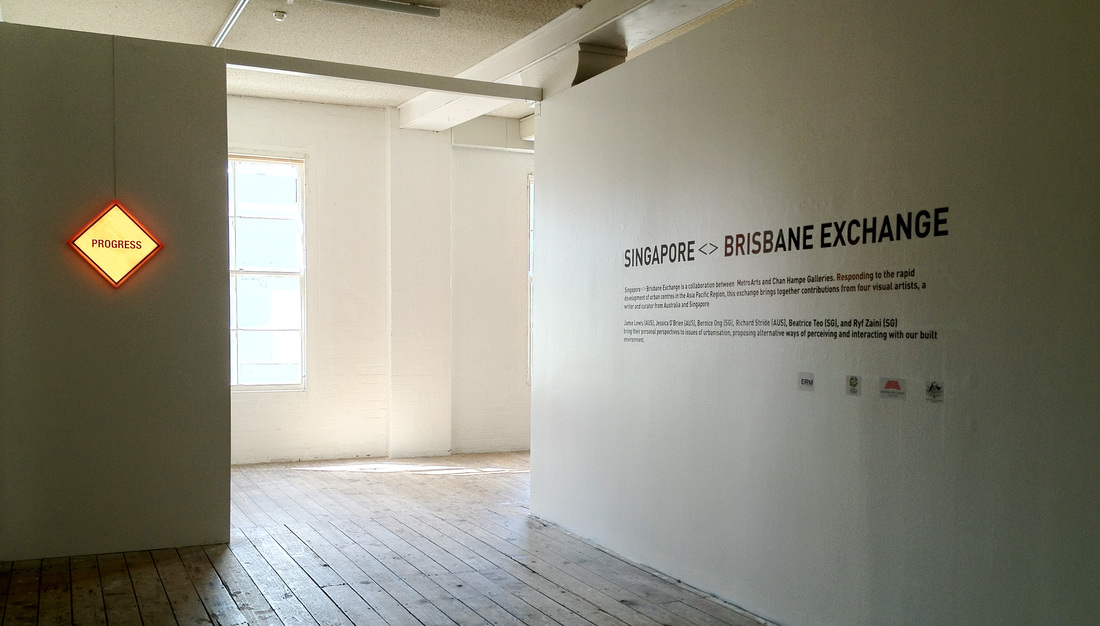
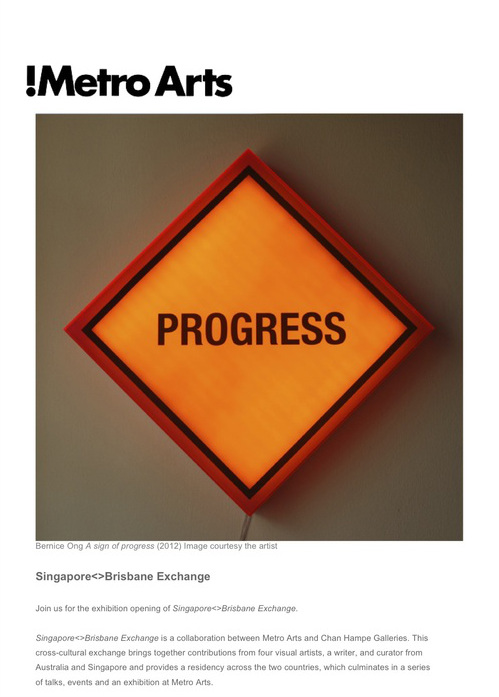
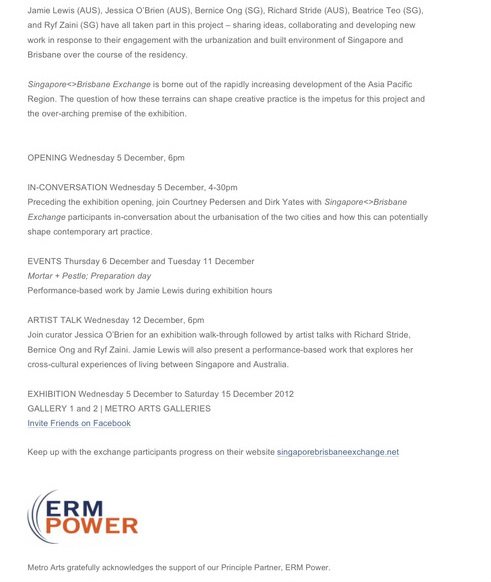
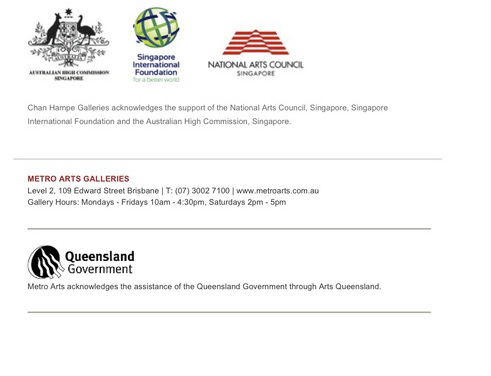
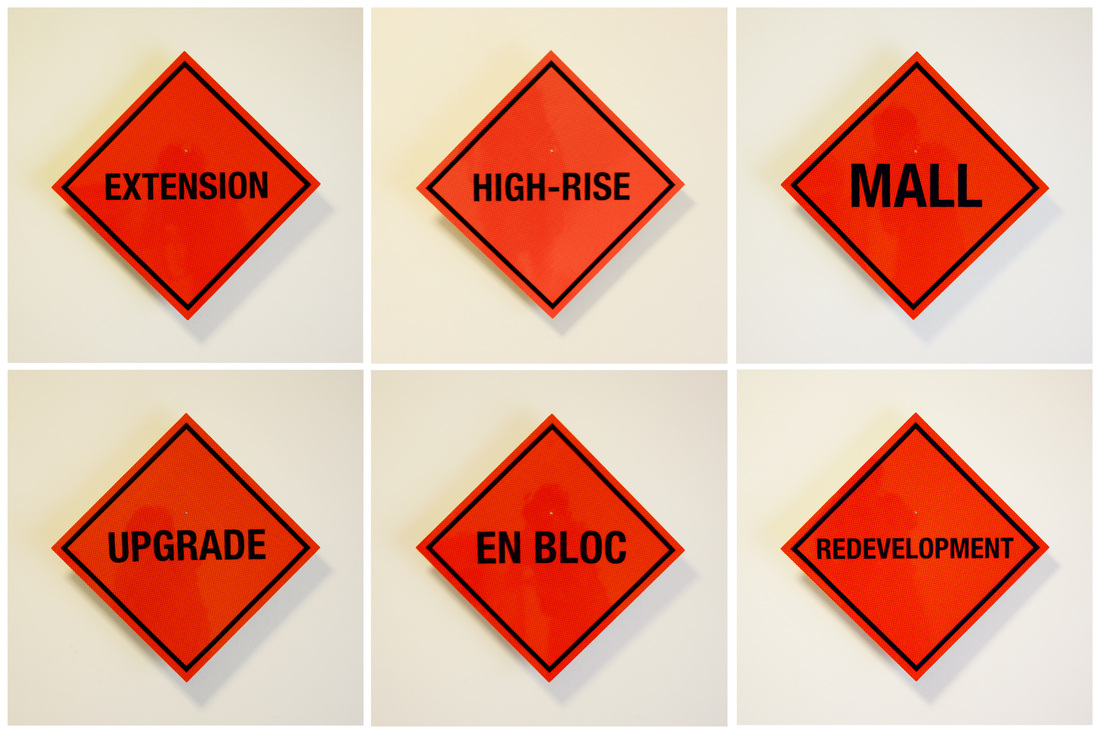
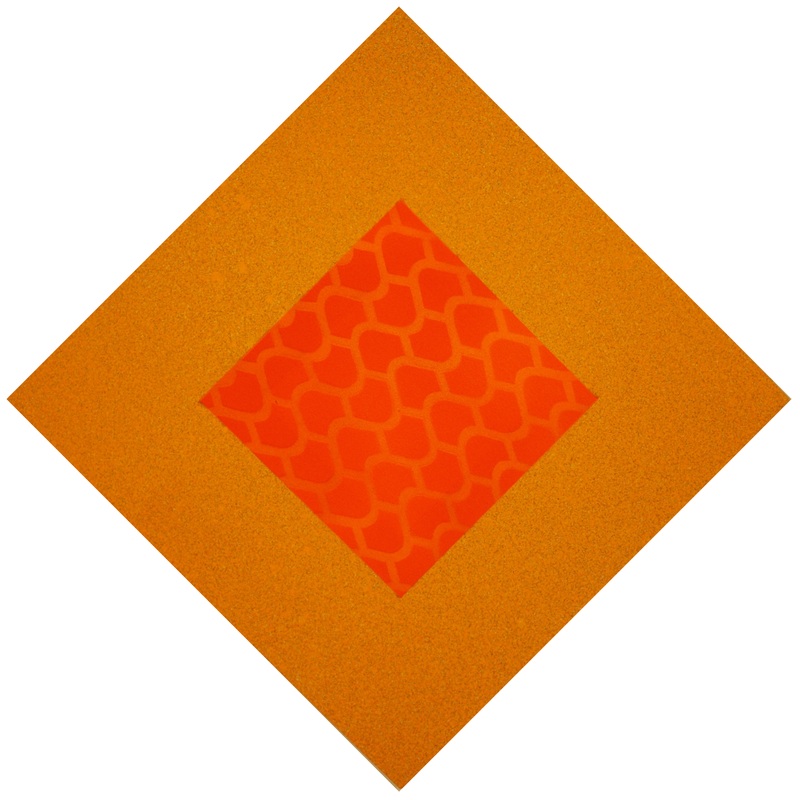

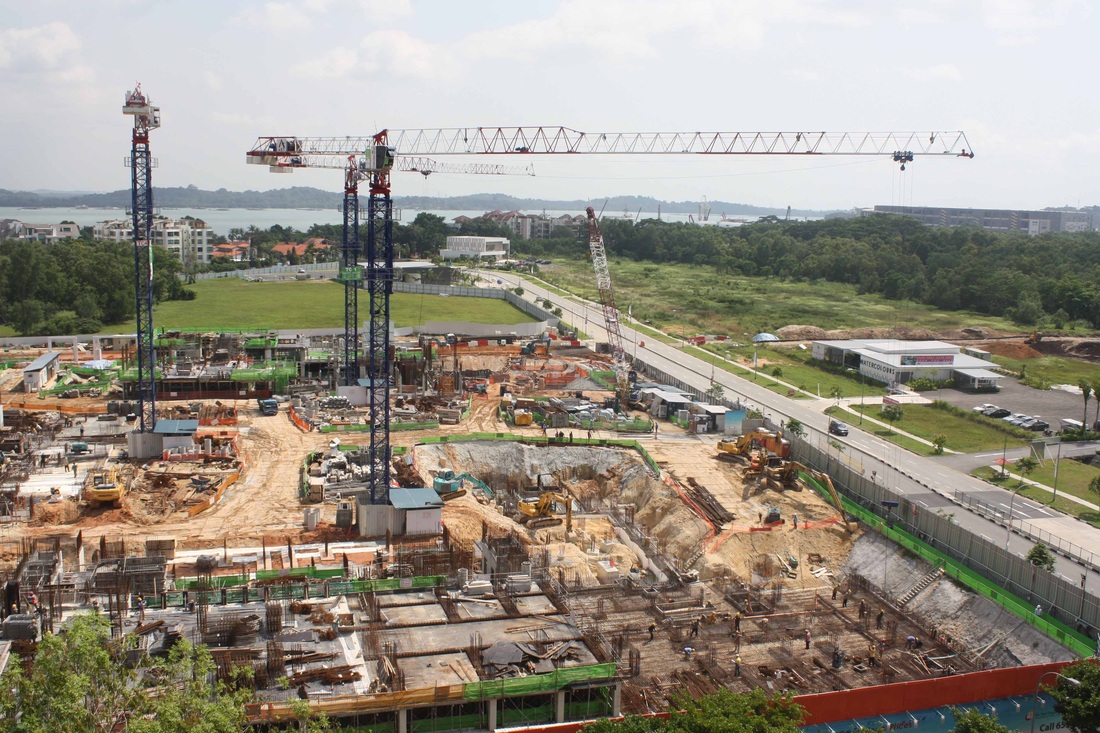
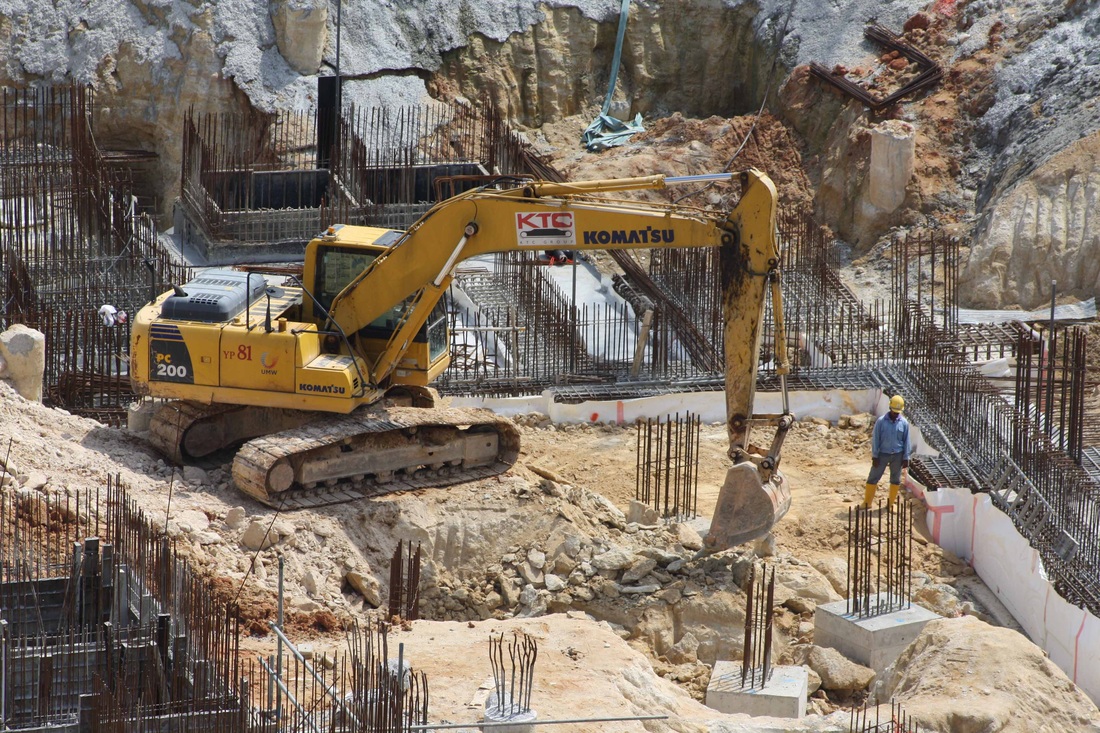
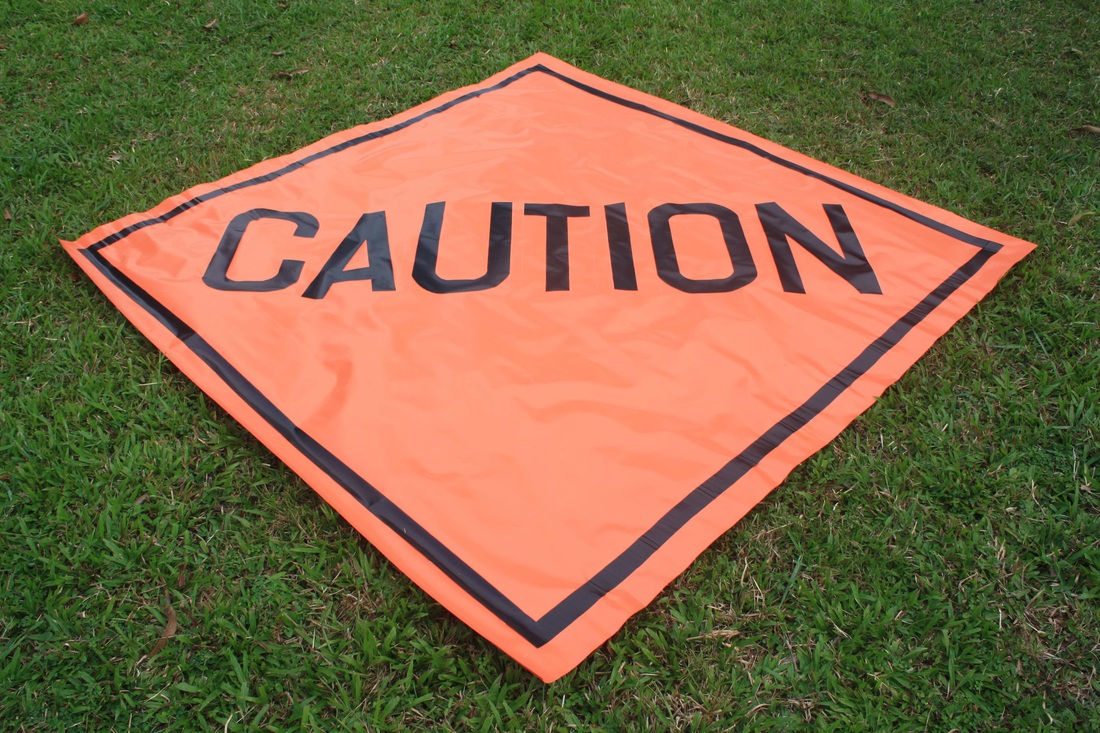
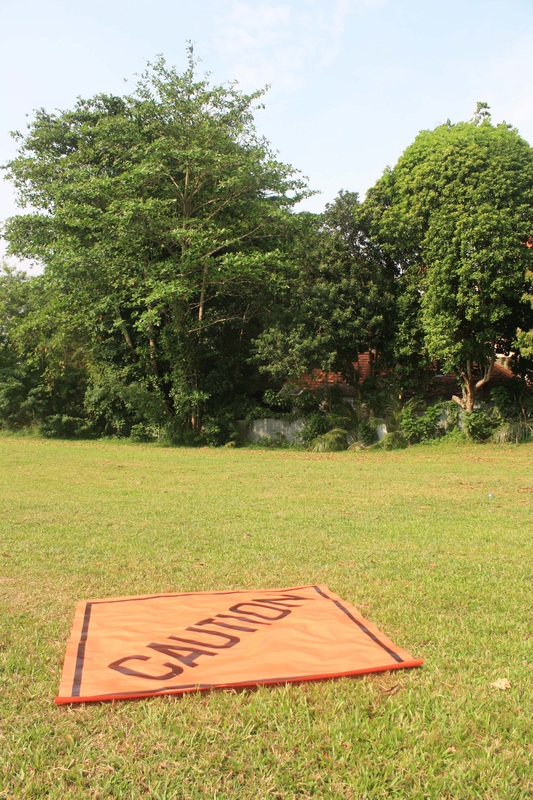
 RSS Feed
RSS Feed
